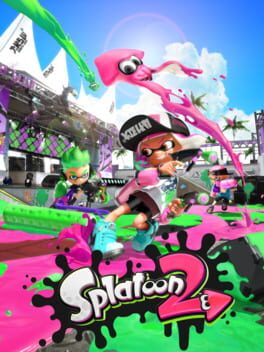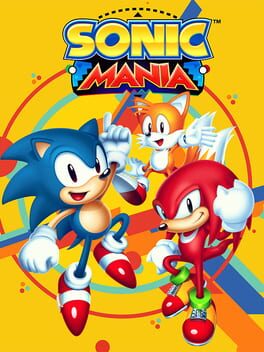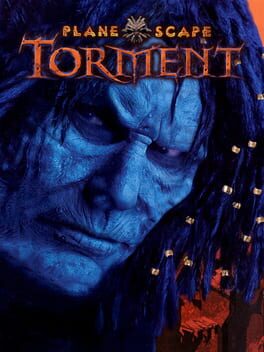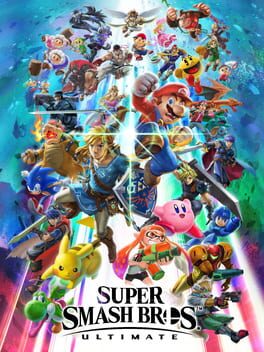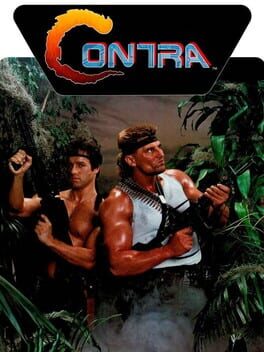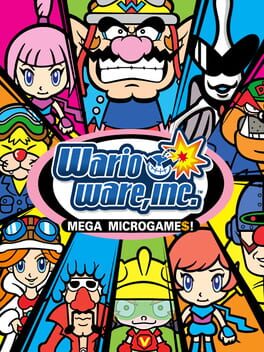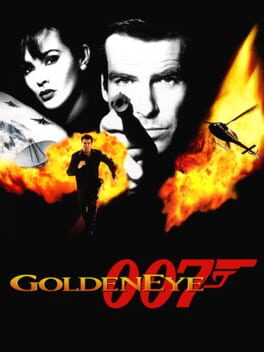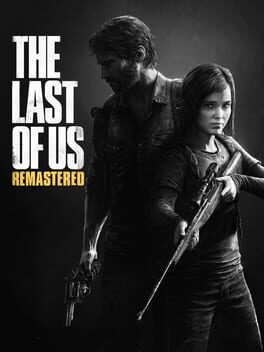Abdulla_Alsaleh
2017
Along with Super Smash Bros. for Wii U and The Legend of Zelda: The Wind Waker HD, the first Splatoon game was one of the first games that I got for my Wii U, and while I did have fun with it and I considered it to be a good game overall, I still felt underwhelmed by it, even after it got update after update presenting new events. I didn't like how practically none of the interesting mechanics and ways of traversal present in the single player campaign were integrated into the multiplayer, and I especially didn't like how there was technically only one game mode, at least in the unranked matches. When I played Splatoon 2, I was hoping that at least some of these issues would be fixed, but Splatoon 2 feels almost exactly the same as its predecessor, complete with the same strengths and weaknesses.
Like the first game, the best parts of Splatoon 2 are its aesthetics and the single player campaign. The art style and world are just as unique and creative as they were in the first game, and Splatoon 2's bubbly, techno-fused score is even better than the score in the first game. The single player campaign is also great, complete with new and interesting platforming mechanics. I already mentioned what I disliked about this game earlier in this review, and while I still do like the core gameplay of Splatoon 2, I got tired of the multiplayer pretty quickly.
Overall, Splatoon 2 feels less like a sequel to Splatoon and more like a Splatoon Expansion pack, and while I do consider this game to be slightly better than its predecessor, I hope that the upcoming Splatoon 3 will make an effort to stand out.
Like the first game, the best parts of Splatoon 2 are its aesthetics and the single player campaign. The art style and world are just as unique and creative as they were in the first game, and Splatoon 2's bubbly, techno-fused score is even better than the score in the first game. The single player campaign is also great, complete with new and interesting platforming mechanics. I already mentioned what I disliked about this game earlier in this review, and while I still do like the core gameplay of Splatoon 2, I got tired of the multiplayer pretty quickly.
Overall, Splatoon 2 feels less like a sequel to Splatoon and more like a Splatoon Expansion pack, and while I do consider this game to be slightly better than its predecessor, I hope that the upcoming Splatoon 3 will make an effort to stand out.
2017
I have a weird relationship with Sonic’s games. I played the first two Sonic games all the time as a kid, but whenever I played them, I usually got bored after trying to beat their second zones. Despite that, the fond memories of zooming around Green Hill Zone made me all the more excited to play Sonic Mania when I bought it a few years ago. Now that I’ve actually beaten it, though, I’ve come to the realization that I never really liked Sonic games to begin with.
Although I didn’t really have fun with Sonic Mania, I could tell that this had tons of heart and passion put into it. The visuals, sound design, and especially the music are fantastic, and pretty much all of the zones and levels are unique and memorable in their own ways. My main issue with Sonic Mania, though, is also my issue with Sonic’s older games, which is that the way Sonic moves and the way his levels are designed always seem to be at odds with each other. Sonic is designed to go incredibly fast in a matter of seconds, but the levels are filled to the brim with obstacles that you couldn’t even see coming, and they force you to slow down, which doesn’t feel fun when Sonic can barely even stand still. Sonic also has a ginormous hitbox, so if the smallest pixel on his head touches the bottom of a solid platform, he dies instantly, which gets really annoying really quickly.
Although I didn’t have a fun time with Sonic Mania, I still think that it’s a good game, just not one for me. This was clearly made for Sonic fans, and while I used to think that I was one, playing Sonic Mania opened my eyes to how unfun his games are for me to play.
Although I didn’t really have fun with Sonic Mania, I could tell that this had tons of heart and passion put into it. The visuals, sound design, and especially the music are fantastic, and pretty much all of the zones and levels are unique and memorable in their own ways. My main issue with Sonic Mania, though, is also my issue with Sonic’s older games, which is that the way Sonic moves and the way his levels are designed always seem to be at odds with each other. Sonic is designed to go incredibly fast in a matter of seconds, but the levels are filled to the brim with obstacles that you couldn’t even see coming, and they force you to slow down, which doesn’t feel fun when Sonic can barely even stand still. Sonic also has a ginormous hitbox, so if the smallest pixel on his head touches the bottom of a solid platform, he dies instantly, which gets really annoying really quickly.
Although I didn’t have a fun time with Sonic Mania, I still think that it’s a good game, just not one for me. This was clearly made for Sonic fans, and while I used to think that I was one, playing Sonic Mania opened my eyes to how unfun his games are for me to play.
1988
Aside from The Lost Levels, it’s kind of hard not to like the first four 2D Mario games. While the first game’s physics are hard to adjust to for those who are used to the newer games, it’s still a solid platformer that saved the video game industry almost single handedly. Super Mario Bros. 2 isn’t even considered a Mario game by many players, but it still has its own charm, and Super Mario World is filled to the brim with varied and creative levels. I don’t think that any of Mario’s first four games are perfect, but my favorite out of the bunch has to be Super Mario Bros. 3.
Aside from its apparent increase in automatic sidescrolling levels and cryptic levels that can’t be beaten without a Google search, most of Super Mario Bros. 3’s levels are pretty much perfect, and their design is made even better thanks to how varied the world themes are. Although it does have some of the more conventional Mario worlds, like a desert world and an ice world, Super Mario Bros. 3 has unique worlds that never made an appearance in other Mario games, like World 4 being a giant’s world and World 7 being almost entirely made of pipes. Like I said earlier, none of Mario’s 2D games are perfect, in my opinion, but Super Mario Bros. 3 is the closest that a 2D Mario game has gotten to perfection.
Aside from its apparent increase in automatic sidescrolling levels and cryptic levels that can’t be beaten without a Google search, most of Super Mario Bros. 3’s levels are pretty much perfect, and their design is made even better thanks to how varied the world themes are. Although it does have some of the more conventional Mario worlds, like a desert world and an ice world, Super Mario Bros. 3 has unique worlds that never made an appearance in other Mario games, like World 4 being a giant’s world and World 7 being almost entirely made of pipes. Like I said earlier, none of Mario’s 2D games are perfect, in my opinion, but Super Mario Bros. 3 is the closest that a 2D Mario game has gotten to perfection.
1999
NOTE: Although I played this game through the enhanced edition, I wanted to log it as the original game.
There is pretty much no way of me being able to start this review without saying that Planescape: Torment is the greatest game I’ve ever played. Even before I beat the game, I knew that was the case. In the past, I’ve considered a few games to be my favorites of all time, like Metal Gear Solid 3: Snake Eater and Fallout: New Vegas, and while I do love those games to death, neither of them have impacted me as much as Planescape: Torment.
Before I actually played the game or even knew what it was about, I heard that Planescape: Torment was a landmark in video game writing, and I can definitely see why, because this has some of the best writing I’ve ever seen in a video game. The plot and characters are fascinating, and even the small side quests are incredibly memorable with how well written they are. The game is also incredibly philosophical, and I’ve found myself making choices based on what I actually believed in rather than what I felt the game wanted me to choose. I also loved the Planescape setting. Many pieces of fantasy media retread familiar waters by having the same elves, orcs, goblins and so on, but the Planescape setting’s lore, creatures, and locations are all incredibly unique.
I could go on and on about just how incredible this game is, but I’ll end my review with this note: If there was one game that I believe everyone should play from start to finish, even people who don’t play video games, I believe that game should be Planescape: Torment. It’s not only my favorite game of all time, but it’s also one of my favorite pieces of art in general.
There is pretty much no way of me being able to start this review without saying that Planescape: Torment is the greatest game I’ve ever played. Even before I beat the game, I knew that was the case. In the past, I’ve considered a few games to be my favorites of all time, like Metal Gear Solid 3: Snake Eater and Fallout: New Vegas, and while I do love those games to death, neither of them have impacted me as much as Planescape: Torment.
Before I actually played the game or even knew what it was about, I heard that Planescape: Torment was a landmark in video game writing, and I can definitely see why, because this has some of the best writing I’ve ever seen in a video game. The plot and characters are fascinating, and even the small side quests are incredibly memorable with how well written they are. The game is also incredibly philosophical, and I’ve found myself making choices based on what I actually believed in rather than what I felt the game wanted me to choose. I also loved the Planescape setting. Many pieces of fantasy media retread familiar waters by having the same elves, orcs, goblins and so on, but the Planescape setting’s lore, creatures, and locations are all incredibly unique.
I could go on and on about just how incredible this game is, but I’ll end my review with this note: If there was one game that I believe everyone should play from start to finish, even people who don’t play video games, I believe that game should be Planescape: Torment. It’s not only my favorite game of all time, but it’s also one of my favorite pieces of art in general.
Donkey Kong Country turned out to be one of my favorite games on the SNES, and while I was excited to check out its first sequel, I wasn’t sure if it was going to be on the same level as its predecessor. Now that I’ve actually beaten it, though, Donkey Kong Country 2: Diddy’s Kong Quest took everything that made Donkey Kong Country good and made it even better. The levels are even more atmospheric and well designed than they were in the first game, and David Wise’s score is twice as terrific as the first one. Not only that, but giving Dixie Kong an advantage over Diddy Kong rather than just being a walking shield was a great idea, and it also led to some incredible levels designed around her hover ability.
Donkey Kong Country 2: Diddy’s Kong Quest is also far more difficult than its predecessor, which was a hard game on its own, and although I found myself losing a lot more lives throughout this game, I also found myself having a lot more fun. Donkey Kong Country was challenging, but fair, and while that still kind of applies to Donkey Kong Country 2: Diddy’s Kong Quest, I saw the game as the perfect balance between a fair challenge and a rage inducer, and that balance was what kept me going, in a way.
Although I still need to play more games on the SNES, especially more story driven ones, I have no problem calling Donkey Kong Country 2: Diddy’s Kong Quest my favorite SNES game, and although I’m still very excited to play Donkey Kong Country 3: Dixie Kong’s Double Trouble!, I’m not sure if it can get any better than this.
Donkey Kong Country 2: Diddy’s Kong Quest is also far more difficult than its predecessor, which was a hard game on its own, and although I found myself losing a lot more lives throughout this game, I also found myself having a lot more fun. Donkey Kong Country was challenging, but fair, and while that still kind of applies to Donkey Kong Country 2: Diddy’s Kong Quest, I saw the game as the perfect balance between a fair challenge and a rage inducer, and that balance was what kept me going, in a way.
Although I still need to play more games on the SNES, especially more story driven ones, I have no problem calling Donkey Kong Country 2: Diddy’s Kong Quest my favorite SNES game, and although I’m still very excited to play Donkey Kong Country 3: Dixie Kong’s Double Trouble!, I’m not sure if it can get any better than this.
1996
I’ve wanted to play Super Mario 64 ever since I was a little kid. For almost all of the years I’ve been alive, I’ve heard the same phrases used to praise Super Mario 64 over and over again. Whenever someone talked about Super Mario 64, they always mentioned how it revolutionized video games as a whole with its jump from 2D to 3D, how much freedom the game gave you, how great the controls were, and how most of their childhood memories associated with the game were spent roaming Princess Peach’s Castle. Because of this constant praise, I kept getting more and more excited to play Super Mario 64, and now that I’ve actually played it, it didn’t live up to any of my expectations.
At least 90% of my time spent playing Super Mario 64 was spent getting frustrated with the game rather than having fun with it. While the controls on land are mostly great, Mario has a tendency to slip as he’s landing on the ground, and while that isn’t a problem in most cases, it makes jumping onto thin or small platforms incredibly annoying. The other methods of controlling Mario, such as swimming and flying, are janky and feel like they’ve been made to work against their levels rather than with them. Speaking of which, many of the levels in Super Mario 64 are straight up not fun to play, as making even one slip-up causes the player to instantly die. This, combined with how the levels feel as if they punish letting the player approach levels creatively and instead reward sticking to the most obvious path, makes me wonder how so many people have championed Super Mario 64 as a game of freedom.
While I do respect Super Mario 64 for how innovative and revolutionary it was at the time, I barely had any fun with the game itself, and while I do know that 3D Mario games have gotten better with the releases of the Super Mario Galaxy duology and especially Super Mario Odyssey, I can’t imagine someone picking up Super Mario 64 and having just as much fun with it as someone did back in 1996.
At least 90% of my time spent playing Super Mario 64 was spent getting frustrated with the game rather than having fun with it. While the controls on land are mostly great, Mario has a tendency to slip as he’s landing on the ground, and while that isn’t a problem in most cases, it makes jumping onto thin or small platforms incredibly annoying. The other methods of controlling Mario, such as swimming and flying, are janky and feel like they’ve been made to work against their levels rather than with them. Speaking of which, many of the levels in Super Mario 64 are straight up not fun to play, as making even one slip-up causes the player to instantly die. This, combined with how the levels feel as if they punish letting the player approach levels creatively and instead reward sticking to the most obvious path, makes me wonder how so many people have championed Super Mario 64 as a game of freedom.
While I do respect Super Mario 64 for how innovative and revolutionary it was at the time, I barely had any fun with the game itself, and while I do know that 3D Mario games have gotten better with the releases of the Super Mario Galaxy duology and especially Super Mario Odyssey, I can’t imagine someone picking up Super Mario 64 and having just as much fun with it as someone did back in 1996.
The Elder Scrolls V: Skyrim was the first M rated game I ever bought. I don’t remember my exact age when I bought it, but I definitely remember it being in between the years of 2012 and 2015. I didn’t really understand how RPGs worked, so I treated the game like it was a fantasy-themed Grand Theft Auto game by just committing crimes and wreaking havoc. Even after all this time, I never actually beat the main story or completed any of the guilds fully until now.
I remember TotalBiscuit (May He Rest In Peace) saying that Skyrim was as wide as an ocean, but as deep as a puddle, and I honestly couldn’t agree more. This game is incredibly shallow and repetitive, as a large amount of it is spent clearing out Nordic ruins that all look and feel exactly the same. This repetitiveness not only plagues the gameplay, but it also plagues the quests and the guilds, as they all involve being granted high-ranking titles in each guild after completing only a few minor quests. Gaining all of these titles also doesn’t feel as important as the one-dimensional characters try to make me think they are, because no matter how many quests I completed and ranks I’ve earned, all of the NPCs treated me as if I was a complete stranger, and the world as a whole wasn’t affected in the slightest.
Despite all of this, I still had my fun with Skyrim, as doing things such as exploring the world and leveling up my character were fun in their own ways, but even these aspects of Skyrim have their flaws. Although the world is technically detailed and especially impressive for the Creation Engine to pull off, the drab, muted color palette and uninspired art direction made me feel like I was visiting a funeral rather than exploring a vast fantasy world. The level up system can’t really go anywhere but up, and some of the skills that are practically essential, such as Smithing and Alchemy, are a chore to level up.
Overall, I don’t think that Skyrim is a very good game, but I still had my fair share of fun with it despite that. I hope that other installments in the Elder Scrolls series, such as Oblivion and Morrowind, will captivate me in ways that Skyrim didn’t.
I remember TotalBiscuit (May He Rest In Peace) saying that Skyrim was as wide as an ocean, but as deep as a puddle, and I honestly couldn’t agree more. This game is incredibly shallow and repetitive, as a large amount of it is spent clearing out Nordic ruins that all look and feel exactly the same. This repetitiveness not only plagues the gameplay, but it also plagues the quests and the guilds, as they all involve being granted high-ranking titles in each guild after completing only a few minor quests. Gaining all of these titles also doesn’t feel as important as the one-dimensional characters try to make me think they are, because no matter how many quests I completed and ranks I’ve earned, all of the NPCs treated me as if I was a complete stranger, and the world as a whole wasn’t affected in the slightest.
Despite all of this, I still had my fun with Skyrim, as doing things such as exploring the world and leveling up my character were fun in their own ways, but even these aspects of Skyrim have their flaws. Although the world is technically detailed and especially impressive for the Creation Engine to pull off, the drab, muted color palette and uninspired art direction made me feel like I was visiting a funeral rather than exploring a vast fantasy world. The level up system can’t really go anywhere but up, and some of the skills that are practically essential, such as Smithing and Alchemy, are a chore to level up.
Overall, I don’t think that Skyrim is a very good game, but I still had my fair share of fun with it despite that. I hope that other installments in the Elder Scrolls series, such as Oblivion and Morrowind, will captivate me in ways that Skyrim didn’t.
I don’t think I’d be nearly as into games as I am now of it wasn’t for the Super Smash Bros. series. I got into the series with Super Smash Bros. Brawl when I was around seven years old, and although I have played every game in the series except for Melee, Brawl has managed to stay as my favorite, despite its flaws. I didn’t think any game in the Smash Bros. series would be able to challenge Brawl in terms of being my favorite Smash Bros. game, and then Super Smash. Bros Ultimate came along.
Like the name suggests, Super Smash Bros. Ultimate is the biggest and most ambitious game in the series so far, with every single character and almost every stage being playable. The gameplay has been refined to perfection, where it’s much faster than Brawl and even Wii U/3DS while also encouraging much more aggressive play styles. These traits alone make Super Smash Bros. Ultimate a great game, but where things start to get complicated is when the topic of single player content comes up.
One of my favorite parts of each Smash Bros. game was collecting the numerous trophies of characters and items represented the franchises included in the games, and this feature was unfortunately removed from Super Smash Bros. Ultimate. It was instead replaced by spirits, which are just pictures of the aforementioned characters and items, and these collectibles are way less cool and they generally feel like an afterthought. This extends to the game’s story mode, World of Light, which is entirely made up of fighting enemies that are themed around these spirits, and while the mode is serviceable, I wish they went the extra mile with these battles by having us fight the spirits themselves rather than characters that are themed around them. Although I am somewhat disappointed with the mode as a whole, the true ending is honestly one of the most satisfying and surprising endings to any video game I’ve played.
Despite its flaws, I think I’d consider Super Smash Bros. Ultimate to be my favorite game in the series, and since Smash Bros. is my favorite fighting game series, I guess that makes Super Smash Bros. Ultimate my favorite fighting game.
Like the name suggests, Super Smash Bros. Ultimate is the biggest and most ambitious game in the series so far, with every single character and almost every stage being playable. The gameplay has been refined to perfection, where it’s much faster than Brawl and even Wii U/3DS while also encouraging much more aggressive play styles. These traits alone make Super Smash Bros. Ultimate a great game, but where things start to get complicated is when the topic of single player content comes up.
One of my favorite parts of each Smash Bros. game was collecting the numerous trophies of characters and items represented the franchises included in the games, and this feature was unfortunately removed from Super Smash Bros. Ultimate. It was instead replaced by spirits, which are just pictures of the aforementioned characters and items, and these collectibles are way less cool and they generally feel like an afterthought. This extends to the game’s story mode, World of Light, which is entirely made up of fighting enemies that are themed around these spirits, and while the mode is serviceable, I wish they went the extra mile with these battles by having us fight the spirits themselves rather than characters that are themed around them. Although I am somewhat disappointed with the mode as a whole, the true ending is honestly one of the most satisfying and surprising endings to any video game I’ve played.
Despite its flaws, I think I’d consider Super Smash Bros. Ultimate to be my favorite game in the series, and since Smash Bros. is my favorite fighting game series, I guess that makes Super Smash Bros. Ultimate my favorite fighting game.
1987
NOTE: I actually played through the NES port of this game, but I accidentally logged the arcade version back then, so yeah.
Contra is known as one of the hardest games of all time, and I think that it definitely deserves that title. The cheap one-hit deaths and fill-the-screen-with-enemies approach to game design was commonplace in the NES era, but something about the way that Contra did it made it much more fun, satisfying, and especially frustrating than its competitors.
I’ve been trying to beat Contra since 2018, and it not only took me this long because of how hard the game is, but because I was playing it through a web browser. I’d usually play it whenever I got free time during class, and the furthest I ever got before losing all of my continues was the snow level. No matter how frustrating it got, something about the run-&-gun gameplay made me keep coming back for more, and I think it was the idea of finally beating the game that made me play it from start to finish throughout these past two weeks.
Although the journey to beating Contra is one of the most frustrating, unfair, and unpredictable experiences I’ve ever had with any game, getting to actually beat the game is probably one of the most satisfying things I’ve ever done in a video game, and while the satisfaction doesn’t excuse how the game is difficult to the point where beating it without the infamous Konami code is impossible, I’ll still treasure Contra forever.
Contra is known as one of the hardest games of all time, and I think that it definitely deserves that title. The cheap one-hit deaths and fill-the-screen-with-enemies approach to game design was commonplace in the NES era, but something about the way that Contra did it made it much more fun, satisfying, and especially frustrating than its competitors.
I’ve been trying to beat Contra since 2018, and it not only took me this long because of how hard the game is, but because I was playing it through a web browser. I’d usually play it whenever I got free time during class, and the furthest I ever got before losing all of my continues was the snow level. No matter how frustrating it got, something about the run-&-gun gameplay made me keep coming back for more, and I think it was the idea of finally beating the game that made me play it from start to finish throughout these past two weeks.
Although the journey to beating Contra is one of the most frustrating, unfair, and unpredictable experiences I’ve ever had with any game, getting to actually beat the game is probably one of the most satisfying things I’ve ever done in a video game, and while the satisfaction doesn’t excuse how the game is difficult to the point where beating it without the infamous Konami code is impossible, I’ll still treasure Contra forever.
WarioWare: Smooth Moves is a game that I played a lot when I was growing up, and I love it to this day. I’ve always wanted to play the earlier games in the WarioWare series, but since most of the entries were on handheld consoles that I never owned, I never actually got a chance to play them until now.
It’s kind of difficult to talk about a WarioWare game in depth, and that’s because these games weren’t really meant to be deep in the first place. The basic idea of this game is to play a series of minigames (Or microgames, like the title suggests) that last only a few seconds, and to either reach a boss stage after playing a certain amount of these microgames or to play as many of them as you can until you eventually run out of lives. The games themselves are simple, creative, and also funny, and their increase in speed over time means that the player needs to direct a lot of attention when they get further and further into the game. This gameplay is simple, but still lots of fun, and playing these microgames rarely gets old.
The main issue that I have with the game aren’t exactly the fault of the game itself, and it’s more about how limited the Game Boy Advance’s controls are. You see, in WarioWare: Smooth Moves, the Wii’s motion controls were used so that there was tons of variety in the microgames, as they almost all controlled differently. With WarioWare, Inc.: Mega Microgame$!, however, the Game Boy Advance is only limited to a few buttons, so many of them just end up being different ways of pressing the A button. This doesn’t mean that they feel repetitive, though, because the context of these microgames makes them all feel unique, even if they are similar in terms of their controls. Other than that, WarioWare, Inc.: Mega Microgame$! is a simple, but fun and endlessly replayable first entry in a series that I’ve loved since I was a kid.
It’s kind of difficult to talk about a WarioWare game in depth, and that’s because these games weren’t really meant to be deep in the first place. The basic idea of this game is to play a series of minigames (Or microgames, like the title suggests) that last only a few seconds, and to either reach a boss stage after playing a certain amount of these microgames or to play as many of them as you can until you eventually run out of lives. The games themselves are simple, creative, and also funny, and their increase in speed over time means that the player needs to direct a lot of attention when they get further and further into the game. This gameplay is simple, but still lots of fun, and playing these microgames rarely gets old.
The main issue that I have with the game aren’t exactly the fault of the game itself, and it’s more about how limited the Game Boy Advance’s controls are. You see, in WarioWare: Smooth Moves, the Wii’s motion controls were used so that there was tons of variety in the microgames, as they almost all controlled differently. With WarioWare, Inc.: Mega Microgame$!, however, the Game Boy Advance is only limited to a few buttons, so many of them just end up being different ways of pressing the A button. This doesn’t mean that they feel repetitive, though, because the context of these microgames makes them all feel unique, even if they are similar in terms of their controls. Other than that, WarioWare, Inc.: Mega Microgame$! is a simple, but fun and endlessly replayable first entry in a series that I’ve loved since I was a kid.
1997
Goldeneye 007 has been hailed as a classic for a multitude of reasons, and while I agree with a lot of them, there are still quite a few nagging issues that really affected my enjoyment of the game. Weirdly enough, GoldenEye 007 was my introduction to the James Bond series, as I’ve never actually seen a James Bond movie before, and while I’m pretty sure that James Bond doesn’t spend every scene in his movies shooting Russians and accidentally blowing up random crates and chairs, I’d say that this was a pretty good introduction. The levels are almost all nonlinear and have multiple objectives to complete, like many shooters of the time, and while I will get into why this has a downside to it later on in this review, I still like the concept, as it gives each of the level’s rooms and sections more meaning and it also increases the game’s replay value. While the controls feel weird on a keyboard, the shooting itself feels great and satisfying, and the gadgets that Bond uses in certain levels gives the game its spy theme, which makes the game more distinguishable from its early FPS counterparts.
A lot of my problems with GoldenEye 007 come from how some of the game’s parts haven’t aged very well. While I did appreciate the concept of nonlinear levels, there were a lot of cases where I wandered around the level endlessly around the level, having no idea what I had to do until I gave up and looked the objective up on Google. The draw distance is also really low, and while that isn’t so bad in most of the levels, the few outdoor levels in the game are a nightmare because of this draw distance, as you end up getting killed by enemies that you couldn’t even see. The aim mode is nearly unusable, as the red sight is always snaps back to the center of the screen instead of letting you aim wherever you want, and this makes shooting at something specific incredibly frustrating.
While it hasn’t fully aged well, GoldenEye 007 is a great and influential game that still deserves to be played, and although I haven’t gotten a chance to try out the iconic multiplayer mode due to the fact that I played this on an emulator, I still think that I had a great time with this game.
A lot of my problems with GoldenEye 007 come from how some of the game’s parts haven’t aged very well. While I did appreciate the concept of nonlinear levels, there were a lot of cases where I wandered around the level endlessly around the level, having no idea what I had to do until I gave up and looked the objective up on Google. The draw distance is also really low, and while that isn’t so bad in most of the levels, the few outdoor levels in the game are a nightmare because of this draw distance, as you end up getting killed by enemies that you couldn’t even see. The aim mode is nearly unusable, as the red sight is always snaps back to the center of the screen instead of letting you aim wherever you want, and this makes shooting at something specific incredibly frustrating.
While it hasn’t fully aged well, GoldenEye 007 is a great and influential game that still deserves to be played, and although I haven’t gotten a chance to try out the iconic multiplayer mode due to the fact that I played this on an emulator, I still think that I had a great time with this game.
If you’ve been active in the gaming community at some point in the past 7 years, then it’s practically impossible to not know about The Last of Us. It’s one of the most critically acclaimed games of the 2010s and probably of all time as well, and it’s seen by many as one of the greatest games ever made. Where do I stand, though? Well, my relationship with The Last of Us is weird, as there are parts of it that I loved and other parts of it that I hated. When all of these parts are put together, the result is a game that I do generally recommend, but there are a lot of nagging issues about it that keep me from considering it to be the masterpiece that so many other people believe it is.
I’m a fan of Naughty Dog’s Uncharted series, even if I haven’t beaten all of its games yet, and The Last of Us feels like if the gameplay of Uncharted had the puzzle-like shootouts replaced with subpar stealth mechanics and barebones crafting and upgrade systems. There’s no real way to experiment with the stealth in The Last of Us or try approach situations in any way that isn’t what Naughty Dog intended, and that makes the combat in The Last of Us feel tedious and generally not fun. This isn’t me saying that The Last of Us should be filled with set pieces like Uncharted, but it’s just that the only real thing that The Last of Us does better than Uncharted with its gameplay is that it addresses the ludonarrative dissonance that was present in the Uncharted games by having the protagonist’s violent actions affect the story rather than never having it addressed.
Although the story itself is just Children of Men with zombies, the characters were what made me want to keep playing. Joel and Ellie are incredibly well written characters, and I actually managed to care for them throughout my playthrough, which is especially hard to do through a video game. I kept playing because I wanted to know what would happen to them and how their relationship would evolve, and they are the sole reason as to why I was so invested in the game, even after the gameplay and plot failed to invest me. Generally, I don’t think that The Last of Us is a masterpiece, as the gameplay isn’t fun and the story isn’t original, but the characters alone make this game worth playing.
I’m a fan of Naughty Dog’s Uncharted series, even if I haven’t beaten all of its games yet, and The Last of Us feels like if the gameplay of Uncharted had the puzzle-like shootouts replaced with subpar stealth mechanics and barebones crafting and upgrade systems. There’s no real way to experiment with the stealth in The Last of Us or try approach situations in any way that isn’t what Naughty Dog intended, and that makes the combat in The Last of Us feel tedious and generally not fun. This isn’t me saying that The Last of Us should be filled with set pieces like Uncharted, but it’s just that the only real thing that The Last of Us does better than Uncharted with its gameplay is that it addresses the ludonarrative dissonance that was present in the Uncharted games by having the protagonist’s violent actions affect the story rather than never having it addressed.
Although the story itself is just Children of Men with zombies, the characters were what made me want to keep playing. Joel and Ellie are incredibly well written characters, and I actually managed to care for them throughout my playthrough, which is especially hard to do through a video game. I kept playing because I wanted to know what would happen to them and how their relationship would evolve, and they are the sole reason as to why I was so invested in the game, even after the gameplay and plot failed to invest me. Generally, I don’t think that The Last of Us is a masterpiece, as the gameplay isn’t fun and the story isn’t original, but the characters alone make this game worth playing.
1994
The SNES is a console that I really need more experience with. Although I have completed games on it such as Super Mario World, Panel de Pon (The original Japanese version of Tetris Attack), Kirby Super Star, and Kirby’s Dream Land 3, as well as starting many other games, there are still a ton of games on the Super Nintendo that I’ve always wanted to play, but I never did. Donkey Kong Country is one of those games, along with its two sequels, and now that I’ve gotten the chance to complete it through the Nintendo Switch Online’s SNES streaming service, I’m really mad that I didn’t get to play this game sooner.
One of the key differences between the Donkey Kong Country series and the Super Mario series would be the much harder difficulty that is present in the former series, and while Donkey Kong Country is definitely a challenging game, I never felt cheated by it. Every death felt fair, and they also only made me want to get back into the level and get past whatever killed me. The level design in Donkey Kong Country is terrific, and the atmosphere of these levels were was great thanks to the game’s blend of 3D models and 16-bit backgrounds.
Along with the visuals, one of the most atmospheric parts of Donkey Kong Country would have to be David Wise’s fantastic and iconic score. The music in Donkey Kong Country contains a wide variety of instruments and sounds, and they all capture the feeling of each level perfectly. I’m genuinely surprised by just how much I loved Donkey Kong Country, and now that Donkey Kong Country 2: Diddy’s Kong Quest was recently added to the aforementioned SNES streaming service, I won’t have to wait too long to play some more of this excellent style of gameplay.
One of the key differences between the Donkey Kong Country series and the Super Mario series would be the much harder difficulty that is present in the former series, and while Donkey Kong Country is definitely a challenging game, I never felt cheated by it. Every death felt fair, and they also only made me want to get back into the level and get past whatever killed me. The level design in Donkey Kong Country is terrific, and the atmosphere of these levels were was great thanks to the game’s blend of 3D models and 16-bit backgrounds.
Along with the visuals, one of the most atmospheric parts of Donkey Kong Country would have to be David Wise’s fantastic and iconic score. The music in Donkey Kong Country contains a wide variety of instruments and sounds, and they all capture the feeling of each level perfectly. I’m genuinely surprised by just how much I loved Donkey Kong Country, and now that Donkey Kong Country 2: Diddy’s Kong Quest was recently added to the aforementioned SNES streaming service, I won’t have to wait too long to play some more of this excellent style of gameplay.
2019
As someone who loves Hideo Kojima and the Metal Gear Solid series to death, to say that I was pretty excited for Death Stranding is an understatement. Since Kojima left the evil empire known as Konami around the time Metal Gear Solid V: The Phantom Pain came out, that meant that he was able to make any type of game with any type of story that he wanted, regardless of whether it made sense or not. Now that I’ve finally completed the game, I’m glad to say that I loved Death Stranding, although I completely understand why other people don’t.
Death Stranding is one of the most unique AAA games I’ve ever played, and a lot of that is thanks to the gameplay itself. The gameplay mostly centers around delivering packages to isolated people across the UCA (United Cities of America) after a mass extinction known as the Death Stranding occurs out of the blue. A lot of people consider Death Stranding to be a “walking simulator”, and while I do see where they’re coming from, I loved the gameplay a lot. A lot of Death Stranding’s fun comes from trying to find the best route to take in order to keep your cargo in mint condition, which allows for some really cool moments of creative thinking and player freedom, especially when enemies like BTs or MULEs start to pop up.
Hideo Kojima’s games have always had exposition in them, and while I never minded it before due to how complex his stories are, I felt that Death Stranding has just a bit too much exposition. I thought that the story was still great, and the dialogue never reaches Christopher Nolan levels of expository drivel, but I still think that the exposition should’ve been toned down a bit. I also wasn’t a fan of some of the boss battles. Don’t get me wrong, a lot of the boss battles are great, but some of the more gun-centric ones, especially the ones against Cliff Unger, aren’t as fun to play as the other boss battles. I think that this is because Death Stranding’s gameplay is centered around traversing the world rather than gunplay, so shooting bullet sponge troops and scouring the area for guns isn’t as fun as some of the other boss fights. Despite those issues, Death Stranding is a fantastic game that proves that Hideo Kojima can make a terrific, albeit polarizing game without the shackles imposed on him by Konami.
Death Stranding is one of the most unique AAA games I’ve ever played, and a lot of that is thanks to the gameplay itself. The gameplay mostly centers around delivering packages to isolated people across the UCA (United Cities of America) after a mass extinction known as the Death Stranding occurs out of the blue. A lot of people consider Death Stranding to be a “walking simulator”, and while I do see where they’re coming from, I loved the gameplay a lot. A lot of Death Stranding’s fun comes from trying to find the best route to take in order to keep your cargo in mint condition, which allows for some really cool moments of creative thinking and player freedom, especially when enemies like BTs or MULEs start to pop up.
Hideo Kojima’s games have always had exposition in them, and while I never minded it before due to how complex his stories are, I felt that Death Stranding has just a bit too much exposition. I thought that the story was still great, and the dialogue never reaches Christopher Nolan levels of expository drivel, but I still think that the exposition should’ve been toned down a bit. I also wasn’t a fan of some of the boss battles. Don’t get me wrong, a lot of the boss battles are great, but some of the more gun-centric ones, especially the ones against Cliff Unger, aren’t as fun to play as the other boss battles. I think that this is because Death Stranding’s gameplay is centered around traversing the world rather than gunplay, so shooting bullet sponge troops and scouring the area for guns isn’t as fun as some of the other boss fights. Despite those issues, Death Stranding is a fantastic game that proves that Hideo Kojima can make a terrific, albeit polarizing game without the shackles imposed on him by Konami.
